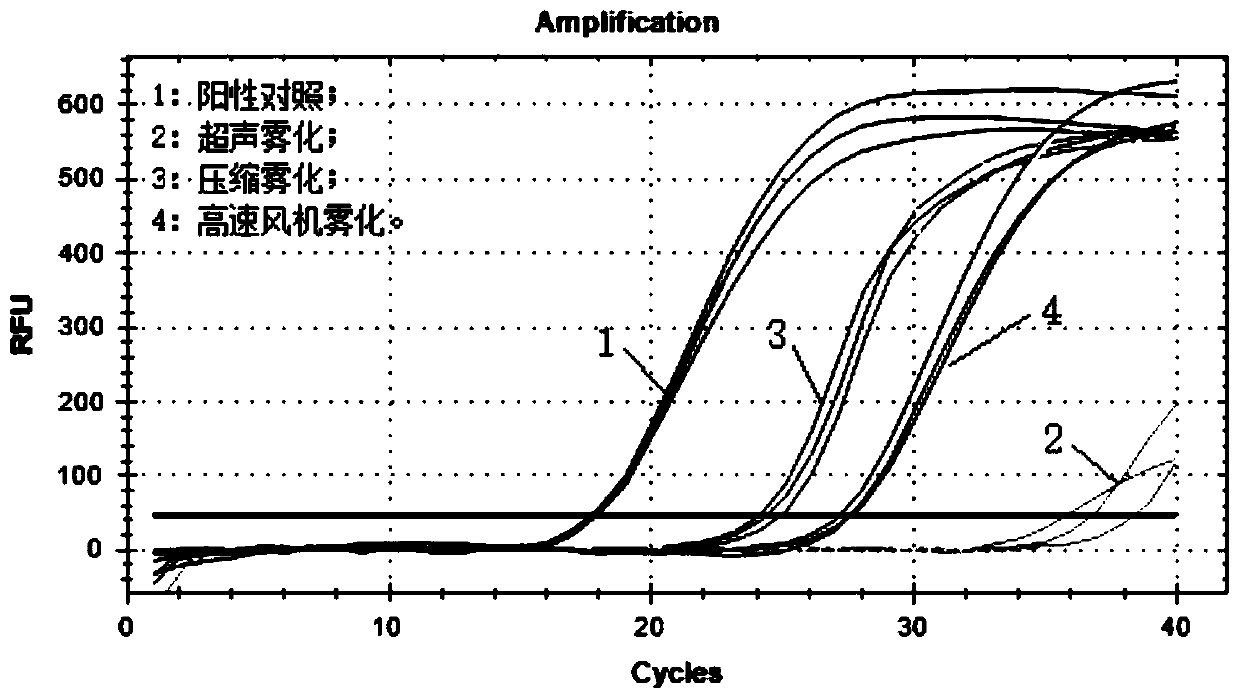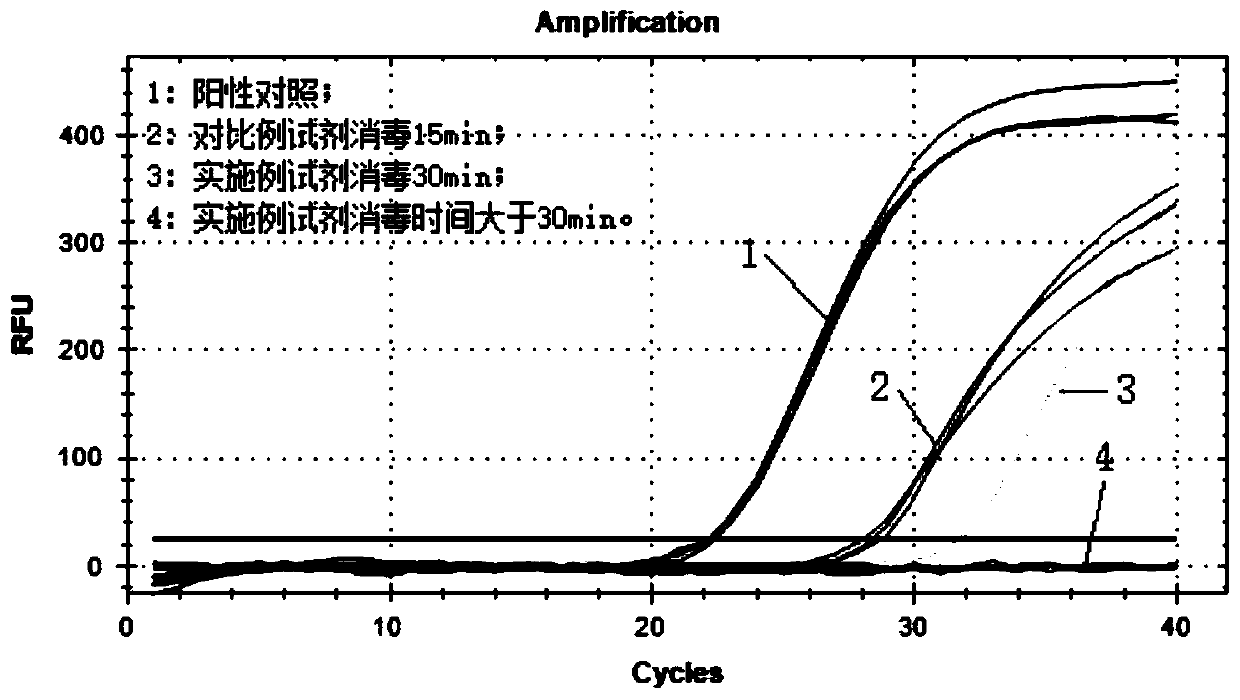Reagent and method for eliminating nucleic acid aerosol pollution in air
An aerosol and nucleic acid technology, applied in the direction of disinfectants, botany equipment and methods, biocides, etc., can solve the problems of prolonging the operation time of PCR experiments, inability to solve aerosol pollution, cumbersome operation, etc., and achieve stable and uniform removal effect. High peroxide conversion rate and hydroxyl radical content, good diffusivity effect
- Summary
- Abstract
- Description
- Claims
- Application Information
AI Technical Summary
Problems solved by technology
Method used
Image
Examples
Embodiment 1
[0057] Reagent formula is 0.01M CuSO 4 -EDTA complex, 0.01M H 2 o 2 and 0.1M ascorbic acid.
[0058] Prepare 1L of disinfectant: 17.612g of ascorbic acid, dissolved in 100ml of 0.3mM pH6.5 sodium phosphate buffer (NaH 2 PO 4 ), add 1.5961g CuSO 4 , 3.3621g EDTA and 1ml 30% H 2 o 2 After dissolving, dilute to 1L with distilled sterilized water.
[0059] Turn on the ultrasonic atomizer, atomize the reagents, and disinfect the positive control group 1 laboratory at a spray speed of 20ml / min for 45 minutes. After the disinfection is completed, collect the filter membrane of the laboratory.
Embodiment 2
[0061] The difference from Example 1 is that the atomization method is compression atomization.
Embodiment 3
[0063] The difference from Example 1 is that the atomization method is high-speed fan atomization.
[0064] The filter membranes recovered from the positive control group 1 and Examples 1-3 were resuspended in PBS, respectively, and the fluorescence quantification was carried out to calculate the clearance rate. The results are shown in Table 1.
[0065] Table 1 The removal effect of nucleic acid aerosol in different atomization methods
[0066]
[0067] from figure 1 Visible with table 1, reagent of the present invention forms dry mist by the selected atomization mode of the present invention, and the clearance rate of nucleic acid aerosol in the air is more than 90%, and each sampling point clearance rate RSD value is less than 10%, illustrates that this The reagent and method can effectively remove the nucleic acid aerosol in the air, and the removal effect is stable and uniform.
[0068] positive control group 2
[0069] The operation is the same as that of the posit...
PUM
 Login to View More
Login to View More Abstract
Description
Claims
Application Information
 Login to View More
Login to View More - R&D
- Intellectual Property
- Life Sciences
- Materials
- Tech Scout
- Unparalleled Data Quality
- Higher Quality Content
- 60% Fewer Hallucinations
Browse by: Latest US Patents, China's latest patents, Technical Efficacy Thesaurus, Application Domain, Technology Topic, Popular Technical Reports.
© 2025 PatSnap. All rights reserved.Legal|Privacy policy|Modern Slavery Act Transparency Statement|Sitemap|About US| Contact US: help@patsnap.com



